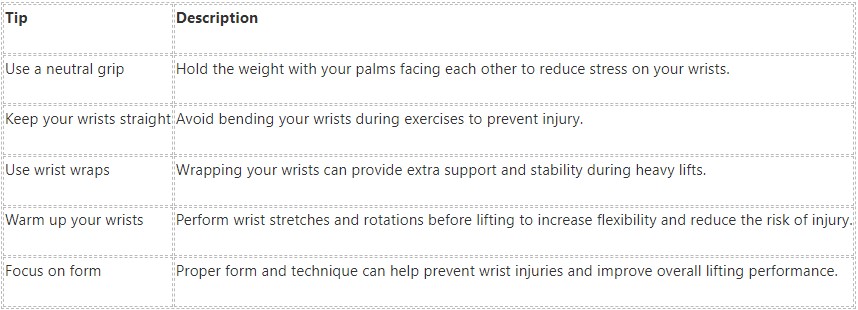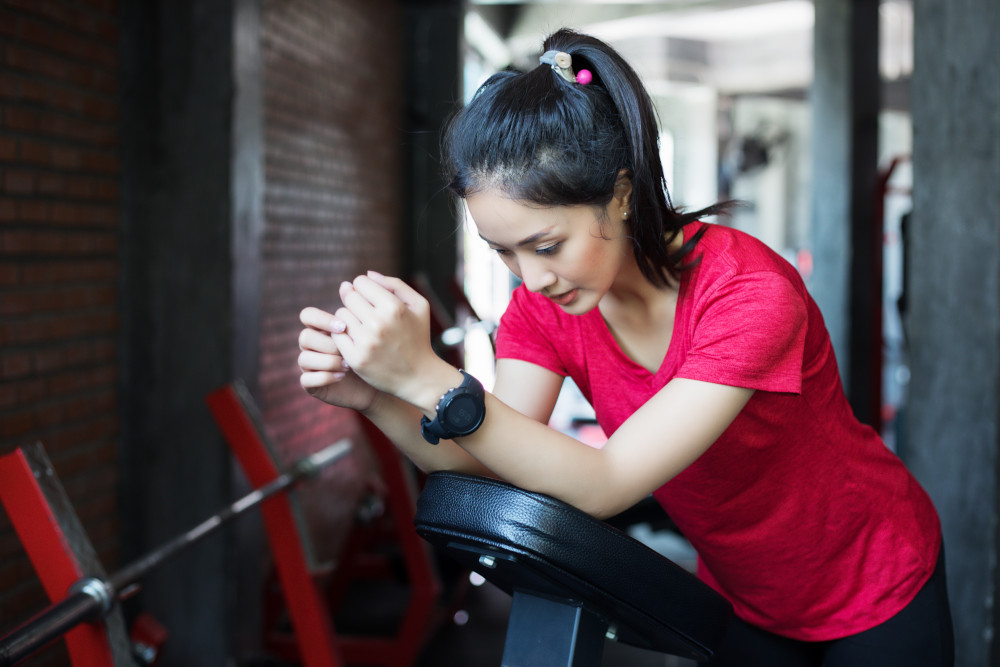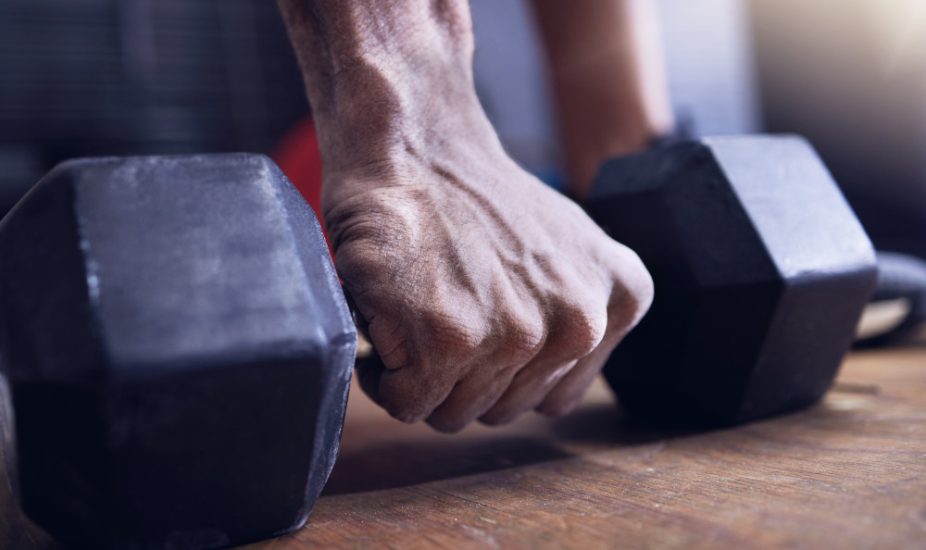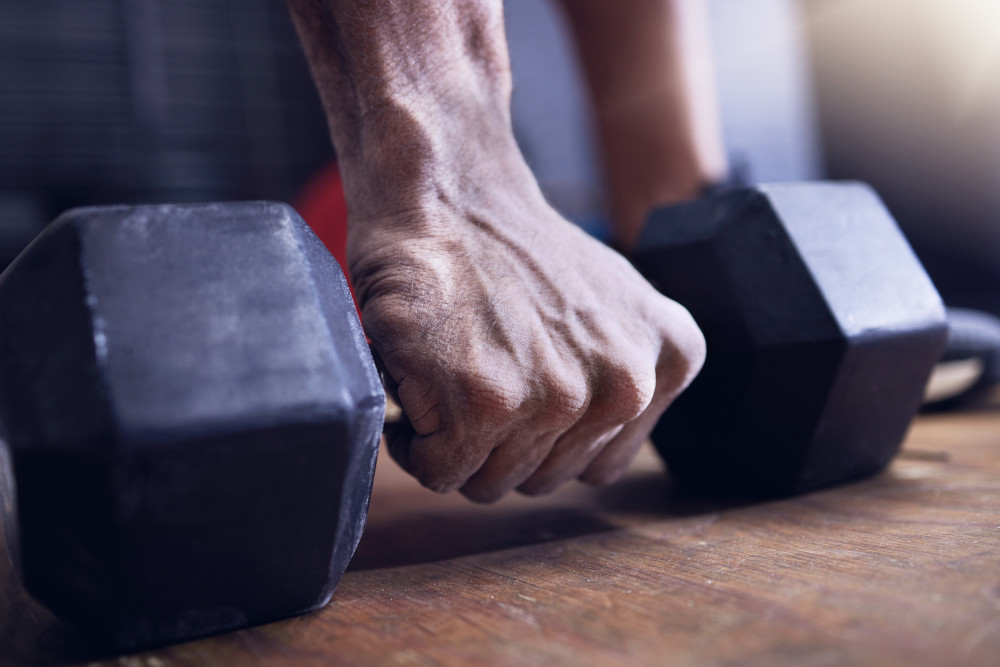The wrists play a vital role in supporting and stabilizing the weight during various exercises, especially in weightlifting. What causes wrist pain? How can you avoid long-term damage of your wrists?
Read on to unlock the answers to these questions.
Key Takeaways
- Overuse, injury, and poor form during weightlifting are some of the factors that cause wrist pain.
- Bench presses, push-ups, and bicep curls are weightlifting exercises that can cause wrist pain.
- Proper wrist positioning during weightlifting can prevent pain and injury.
- Wrist curls and grip squeezes can help prevent pain and injury.
- Warm-up and stretching help prepare your wrists and prevent pain and injury from weightlifting.
Understanding Wrist Pain and Its Causes
To understand how to prevent and alleviate wrist pain in weightlifting, it is important to have a basic understanding of the anatomy of the wrist. The wrist is a complex joint made up of eight small bones called carpal bones. These bones are connected by ligaments and tendons, which provide stability and allow for movement. The muscles in the forearm control the movement of the wrist joint.
There are several common causes of wrist pain in weightlifting. One of the most common causes is improper form or technique during exercises. When the wrists are not properly aligned or supported, excessive stress is placed on the joint, leading to pain and potential injury. Another cause of wrist pain is overuse or repetitive strain. Weightlifting involves repetitive movements that can put a strain on the wrists over time. Weak wrist muscles can contribute to pain and injury as they are unable to adequately support the weight being lifted.
Common Weightlifting Exercises That Can Cause Wrist Pain
Several weightlifting exercises can put a strain on the wrists and lead to pain or injury. One such exercise is the bench press. During the bench press, the wrists are often bent back, placing excessive stress on the joint. This can lead to wrist pain and even conditions such as tendonitis or carpal tunnel syndrome.
Another exercise that can cause wrist pain is the overhead press. When performing this exercise, the wrists are often extended, which can put strain on the joint and lead to discomfort. Similarly, exercises such as push-ups and dips can also cause wrist pain if proper form and wrist positioning are not maintained.
Tips for Proper Wrist Positioning During Weightlifting

Proper form and wrist positioning in weightlifting can prevent wrist pain and injury. One of the most important tips for maintaining proper wrist positioning is to keep the wrists in a neutral position. This means that the wrists should be aligned with the forearms and not bent back or extended. When performing exercises such as the bench press or overhead press, it is important to keep the wrists straight and avoid excessive bending or extension.
Another tip for proper wrist positioning is to engage the forearm muscles. By actively engaging the muscles in the forearm, you can help stabilize the wrists and reduce strain on the joint. Using wrist wraps or support devices can provide extra support and help maintain proper wrist positioning during weightlifting.
How to Strengthen Your Wrist Muscles for Safe Weightlifting
Strengthening the wrist muscles makes weightlifting safer and helps prevent injuries. Strong wrist muscles provide stability and support to the joint, reducing the risk of strain or injury. Several exercises can help strengthen the wrist muscles.
One effective exercise for strengthening the wrist muscles is wrist curls. To perform this exercise, hold a dumbbell or barbell with an underhand grip and rest your forearms on a bench or your thighs. Slowly curl your wrists upward, then lower them back down in a controlled manner. Repeat for several repetitions.
Another exercise that targets the wrist muscles is the farmer’s carry. This exercise involves holding a heavy weight in each hand and walking for a certain distance or time. The weight should be heavy enough to challenge the wrist muscles, but not so heavy that it compromises your form.
Importance of Warm-up and Stretching Before Weightlifting
Warming up and stretching before weightlifting can help prepare the body and reduce the risk of injury. Warming up increases blood flow to the muscles, making them more pliable and less prone to strain or injury. Stretching helps improve flexibility and range of motion, allowing for better performance during exercises.
Before starting your weightlifting routine, it is important to perform a dynamic warm-up. This can include exercises such as arm circles, wrist rotations, and shoulder rolls. These movements help increase blood flow to the wrists and prepare them for the upcoming workout.
After warming up, it is important to stretch the wrists to improve flexibility and reduce the risk of injury. One effective stretch for the wrists is the wrist flexor stretch. To perform this stretch, extend one arm in front of you with the palm facing up. Use your other hand to gently pull back on your fingers until you feel a stretch in your wrist and forearm. Hold for 20-30 seconds, then switch sides.
Wrist Support Devices That Can Help Alleviate Pain
If you are experiencing wrist pain during weightlifting, using wrist support devices can help alleviate discomfort and provide extra stability to the joint. There are several types of wrist support devices available, each with its benefits.
Wrist wraps are one of the most common types of wrist support devices used in weightlifting. They are made of a strong elastic material that wraps around the wrists to provide support and stability. Wrist wraps can help maintain proper wrist positioning during exercises and reduce strain on the joint.
Another type of wrist support device is a wrist brace. Wrist braces are typically made of a rigid material and provide more immobilization and support than wrist wraps. They are often used for more severe wrist injuries or conditions such as carpal tunnel syndrome.
Modifications to Your Weightlifting Routine to Avoid Wrist Pain
If you are experiencing wrist pain during weightlifting, it may be necessary to modify your routine to reduce strain on the wrists. There are several modifications you can make to your exercises to alleviate wrist pain and prevent further injury.
One modification is to use dumbbells instead of barbells for certain exercises. Dumbbells allow for a greater range of motion and can be easier on the wrists. For example, instead of performing the bench press with a barbell, you can use dumbbells and perform the exercise on an incline or decline bench.
Another modification is to use alternative grips or hand positions. For example, if you experience wrist pain during pull-ups or chin-ups, you can try using an underhand grip instead of an overhand grip. This can help reduce strain on the wrists and alleviate discomfort.
Proper Nutrition for Wrist Health and Injury Prevention
Proper nutrition helps maintain overall health and prevent injury, including wrist injuries. Certain foods and nutrients can help support joint health and reduce inflammation, which can contribute to wrist pain in weightlifting.
Omega-3 fatty acids are one nutrient that has been shown to have anti-inflammatory properties and promote joint health. Foods rich in omega-3 fatty acids include fatty fish such as salmon, mackerel, and sardines, as well as flaxseeds, chia seeds, and walnuts.
Another nutrient that is important for joint health is vitamin C. Vitamin C is involved in the production of collagen, which is a key component of cartilage and connective tissue. Foods rich in vitamin C include citrus fruits, strawberries, bell peppers, and broccoli.
When to Seek Medical Help for Persistent Wrist Pain in Weightlifting
While most cases of wrist pain in weightlifting can be managed with rest, proper form, and self-care measures, there are times when medical attention may be necessary. If you experience persistent or severe wrist pain that does not improve with rest or self-care measures, it is important to seek medical help.
Signs that wrist pain in weightlifting may require medical attention include swelling, redness, or warmth around the joint, difficulty moving the wrist or performing everyday tasks, and numbness or tingling in the hand or fingers. These symptoms may indicate a more serious injury or condition that requires medical intervention.
Common medical treatments for wrist pain in weightlifting include physical therapy, medication for pain and inflammation, and in some cases, surgery. A healthcare professional can assess your condition and provide appropriate treatment options based on your specific needs.

Lifestyle Changes to Help Prevent Wrist Pain and Injury
Warm-up and stretching exercises, and modifications to your weightlifting routine, there are several lifestyle changes you can make to reduce the risk of wrist pain and injury.
One important lifestyle change is to prioritize rest and recovery. Overtraining and not allowing enough time for rest can increase the risk of injury. It is important to listen to your body and give yourself adequate time to recover between workouts.
Another lifestyle change is to maintain a healthy body weight. Excess weight can put additional strain on the joints, including the wrists. By maintaining a healthy weight through a balanced diet and regular exercise, you can reduce the load on your wrists and decrease the risk of injury.
Understanding the causes of wrist pain and how to properly care for your wrists can help prevent long-term damage and improve overall fitness. By maintaining proper form, using wrist support devices, and incorporating exercises to strengthen the wrist muscles, you can reduce the risk of wrist pain and injury. Also, warming up and stretching before weightlifting, making modifications to your routine, and prioritizing rest and recovery can further support wrist health. By prioritizing wrist health in weightlifting, you can enjoy the benefits of strength training while minimizing the risk of pain and injury. Your first step toward healing and feeling better is to schedule an appointment for a professional evaluation. Schedule an appointment today – complete and submit the request form by the link: https://www.sportscarept.com/request-an-appointment/. Choose the preferred service and location in the Portland area. If you contact us after business hours, we will get back to you the next business day. We look forward to hearing from you!
Don't let pain or limited mobility hold you back.
Contact us now to schedule your appointment and regain strength through personalized physical therapy sessions. Take charge of your health and well-being today!
Request An AppointmentFrequently Asked Questions
-
What is wrist pain in weightlifting?
Wrist pain in weightlifting is a condition where an individual experiences pain or discomfort in their wrist while performing weightlifting exercises.
-
What causes wrist pain in weightlifting?
Wrist pain in weightlifting can be caused by a variety of factors, including improper form, overuse, lack of flexibility, and underlying medical conditions such as arthritis or carpal tunnel syndrome.
-
What are the symptoms of wrist pain in weightlifting?
Symptoms of wrist pain in weightlifting may include pain, swelling, stiffness, weakness, and difficulty gripping or lifting objects.
-
How can wrist pain in weightlifting be prevented?
Wrist pain in weightlifting can be prevented by using proper form, gradually increasing weight and intensity, warming up and stretching before exercise, and taking breaks to rest and recover.
-
What are some treatment options for wrist pain in weightlifting?
Treatment options for wrist pain in weightlifting may include rest, ice, compression, elevation, physical therapy, and in some cases, surgery.
-
When should I see a doctor for wrist pain in weightlifting?
You should see a doctor for wrist pain in weightlifting if the pain is severe, persistent, or accompanied by other symptoms such as numbness or tingling. If the pain is interfering with your daily activities or if you have a history of wrist injuries, it is important to seek medical attention.


